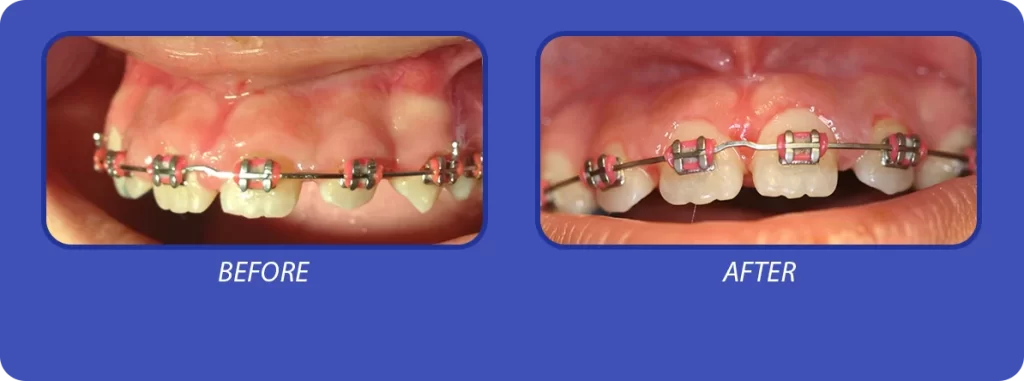We first anesthetize the treatment area(s). A laser removes the excess gum tissue. In most cases, sutures (stitches) are not required. The surgical sites will be sore for 24 to 48 hours, but medication is provided to alleviate any discomfort. A follow-up appointment is scheduled for a week after a week is usually needed to ensure proper healing.









Gingivectomy FAQ
Do gums grow back after gingivectomy?
A gingivectomy to fix a "gummy smile" is permanent. The gum tissue is removed and will not grow back.
What causes gingivectomy?
Excess gum tissue or gingival hyperplasia can develop because of genetics, a side effect of certain medications, trauma, or disease. Talk to Dr. Newhart to help you discover what the cause might be and how to resolve it.
How painful is a gingivectomy?
We will numb the area before the procedure so you won't feel pain. The numbing medication will wear off in a few hours after the procedures. You may feel a sharp or persistent pain. However, over-the-counter medications such as acetaminophen (Tylenol) or ibuprofen (Advil or Motrin) will help with the pain.
How long does it take to heal from a gingivectomy?
It will take a few days to a week to heal from a gingivectomy. To help with healing, eat soft foods, change your bandages often until the bleeding stops, and take over-the-counter pain medication such as acetaminophen (Tylenol) or ibuprofen (Advil or Motrin).